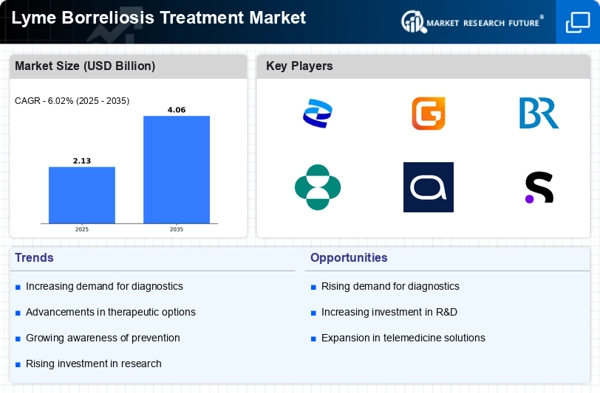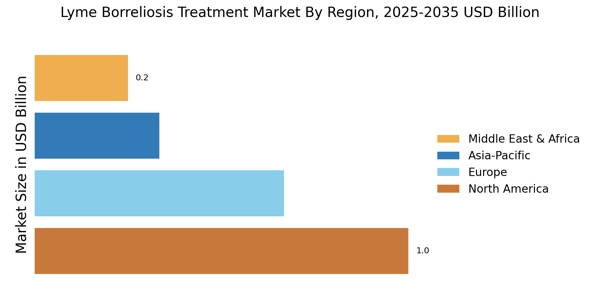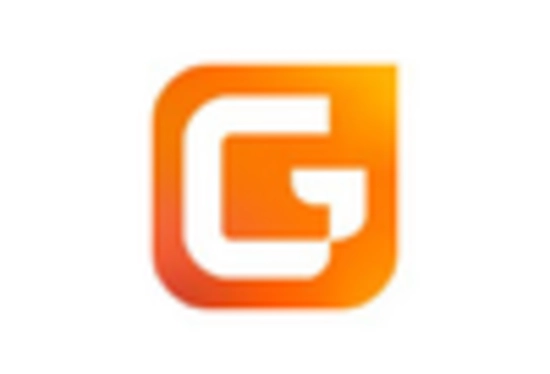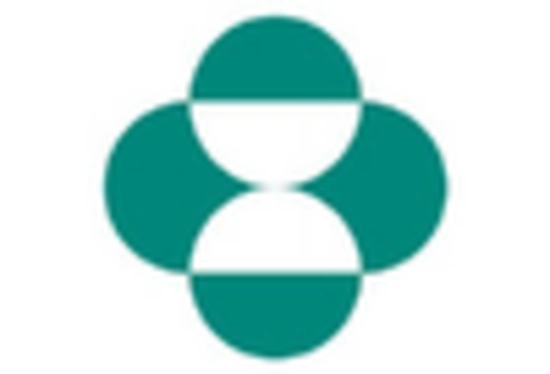Government Initiatives and Funding
Government initiatives and funding aimed at combating Lyme disease are crucial drivers for the Lyme Borreliosis Treatment Market. Various health organizations and government bodies are increasingly allocating resources to research, prevention, and treatment of Lyme disease. For instance, funding for research projects focused on developing new therapies and improving existing treatment protocols is on the rise. Additionally, public health campaigns aimed at educating communities about Lyme disease prevention are gaining traction, which may lead to earlier diagnosis and treatment. Such initiatives not only enhance awareness but also create a favorable environment for the growth of the Lyme Borreliosis Treatment Market. As governments recognize the economic and health burdens associated with Lyme disease, continued investment in this area is anticipated, further propelling market dynamics.
Increasing Incidence of Lyme Disease
The rising incidence of Lyme disease is a primary driver for the Lyme Borreliosis Treatment Market. Reports indicate that the number of reported cases has been steadily increasing, with estimates suggesting that approximately 300,000 cases occur annually in the United States alone. This surge in cases necessitates effective treatment options, thereby propelling the demand for innovative therapies. As awareness of Lyme disease grows, healthcare providers are more vigilant in diagnosing and treating the condition, further contributing to market expansion. The increasing prevalence of Lyme disease is likely to stimulate research and development efforts, leading to the introduction of new treatment modalities that cater to the needs of affected patients. Consequently, the Lyme Borreliosis Treatment Market is poised for growth as stakeholders respond to this pressing public health challenge.
Rising Demand for Alternative Therapies
The rising demand for alternative therapies is emerging as a notable driver in the Lyme Borreliosis Treatment Market. Patients increasingly seek complementary and alternative medicine (CAM) options alongside conventional treatments. This trend is partly driven by the desire for holistic approaches to health and wellness, as well as the need for personalized treatment plans. Various alternative therapies, such as herbal remedies and acupuncture, are gaining popularity among Lyme disease patients, who often report seeking relief from persistent symptoms. As a result, the market is witnessing a diversification of treatment options, with an increasing number of companies exploring the development of alternative therapies. This shift may lead to a more comprehensive approach to Lyme disease management, ultimately benefiting the Lyme Borreliosis Treatment Market.
Technological Advancements in Diagnostics
Technological advancements in diagnostic tools are significantly influencing the Lyme Borreliosis Treatment Market. Enhanced diagnostic capabilities, such as polymerase chain reaction (PCR) testing and advanced serological assays, allow for earlier and more accurate detection of Lyme disease. This improvement in diagnostics not only facilitates timely treatment but also increases the overall awareness of the disease among healthcare professionals and patients. As a result, the demand for effective treatment options is likely to rise, driving market growth. Furthermore, the integration of digital health technologies, including telemedicine and mobile health applications, is expected to enhance patient engagement and adherence to treatment protocols. These innovations may lead to improved patient outcomes and satisfaction, thereby fostering a more robust Lyme Borreliosis Treatment Market.
Growing Research and Development Activities
Growing research and development activities in the field of Lyme disease are significantly impacting the Lyme Borreliosis Treatment Market. Pharmaceutical companies and research institutions are increasingly investing in the discovery of novel therapeutic agents and treatment strategies. This focus on R&D is driven by the need to address the limitations of existing treatments and to develop more effective solutions for patients suffering from Lyme disease. Clinical trials exploring new antibiotics, immunotherapies, and adjunctive treatments are underway, indicating a robust pipeline of potential therapies. As these research initiatives progress, they are likely to yield innovative treatment options that could reshape the Lyme Borreliosis Treatment Market. The emphasis on R&D not only enhances the therapeutic landscape but also fosters collaboration among stakeholders, further stimulating market growth.


















Leave a Comment